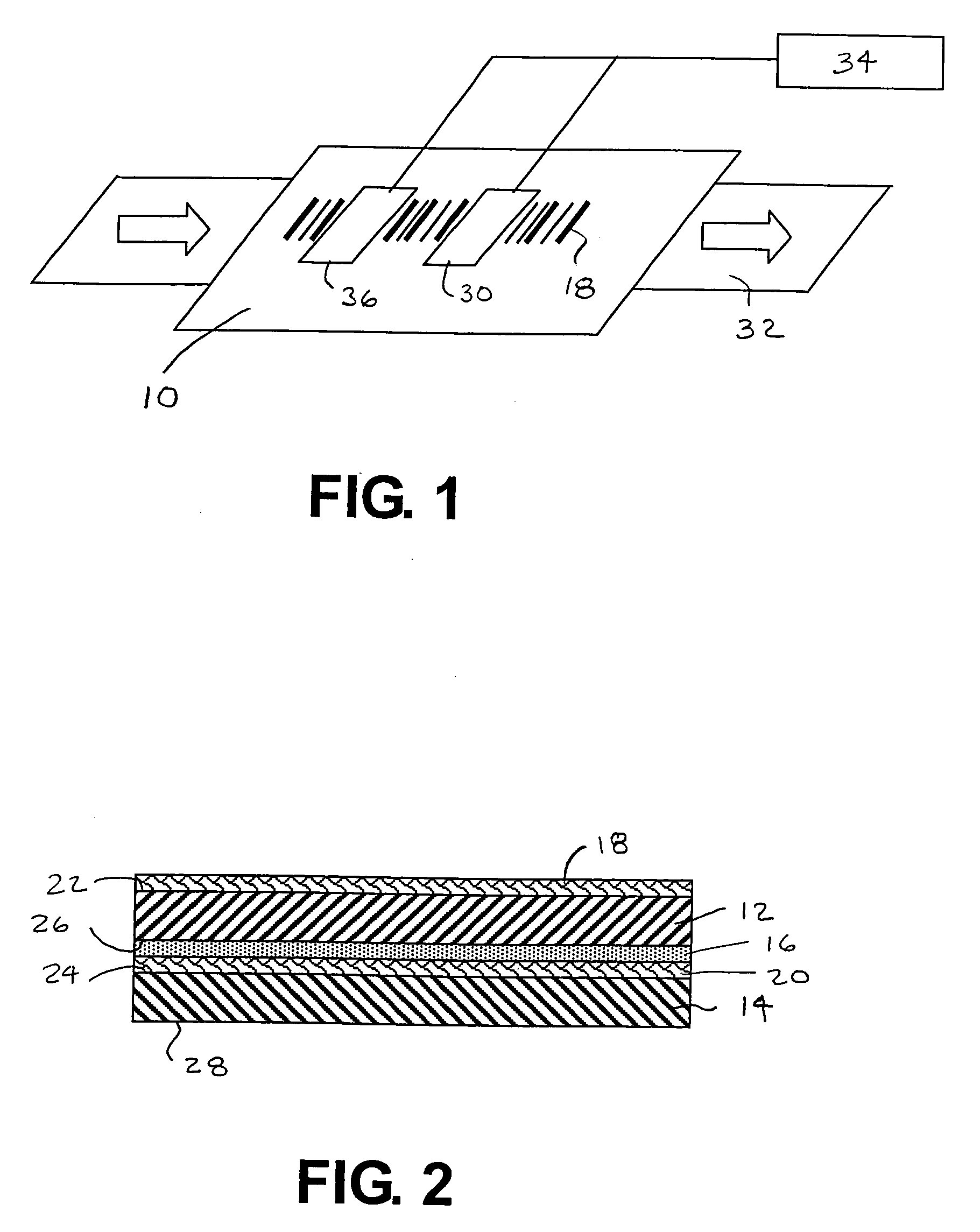Media verification system
a verification system and media technology, applied in the field of printed articles, can solve the problem that the conductivity pattern of the printed pattern does not necessarily reproduce the conductivity pattern of the conductive medium, and achieve the effect of increasing access speed and saving storag
- Summary
- Abstract
- Description
- Claims
- Application Information
AI Technical Summary
Benefits of technology
Problems solved by technology
Method used
Image
Examples
Embodiment Construction
[0060]The invention addresses a need for uniquely identifying print media, particularly as to its origins or authenticity. A wide variety of print media are contemplated for the invention, which can vary in material composition, form, and configuration—all of which can be exploited in accordance with the invention for contributing to the variability of unique signatures for identifying individual printable articles.
[0061]By way of example, a laminated ticket 10, as shown in FIGS. 1 and 2, is manufactured so that one or more of a plurality of substrates 12 and 14 are printed with patterns 18 and 20 using an electrically conductive medium, such as an electrically conductive ink. Upon lamination of the substrates 12 and 14 together through a layer of adhesive 16, the patterns 18 and 20 are distributed through the thickness of the ticket 10.
[0062]Although the printed patterns 18 and 20 are shown printed on top surfaces 22 and 24 of the two substrates 12 and 14, the printed patterns 18 a...
PUM
 Login to View More
Login to View More Abstract
Description
Claims
Application Information
 Login to View More
Login to View More - R&D
- Intellectual Property
- Life Sciences
- Materials
- Tech Scout
- Unparalleled Data Quality
- Higher Quality Content
- 60% Fewer Hallucinations
Browse by: Latest US Patents, China's latest patents, Technical Efficacy Thesaurus, Application Domain, Technology Topic, Popular Technical Reports.
© 2025 PatSnap. All rights reserved.Legal|Privacy policy|Modern Slavery Act Transparency Statement|Sitemap|About US| Contact US: help@patsnap.com



